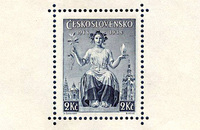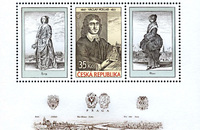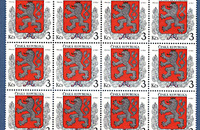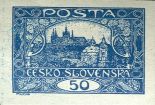Museum need - stamps
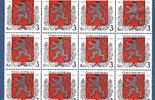
This sub-collection contains postage stamps from 18 December 1918 onwards (incl. the protectorate era). All post-1947 first day covers and souvenir sheets are also included. Field post office (FPO) charity stamps produced by Russia-based Czechoslovak Legion troops are among the other materials.
The FPO stamps were designed in September 1919 by legionaries E. Číla and J. Malý (legionary Švec is also named by some sources). The original five motifs - standing legionary, legionary by campfire, armed train on the Siberian railway line, field guard and scout - were reduced to the final three. The stamps, including a 25-kopeck piece with the Irkutsk basilica in red to be used on postcards; a 50-kopeck piece with armed train Orlík in green to be used on letters, and a 1-rouble piece with a standing legionary in brown to be used on correspondence destined to Czechoslovakia, were lithographed in December 1919 in the leased Irkutsk-based Makushina and Posokhina printing house. The stamps were put on sale on 14 January 1920. Stamps applied for the purposes of the so-called Scout Post, an organisation providing fast courier services inside Prague, are also part of this sub-collection. They include a couple of non-official (?semi-official) stamps with the face value of 10h (blue) and 20h (red), ordered by sports and philatelic official J. Rössler-Ořovský and allegedly sanctioned by the National Committee in Prague. The stamps were not intended for use by the Post Office as postage.
The so-called se-tenant sheets of the first Czechoslovak stamps (most of them are on display in the stamp exposition) are among the highlights of this sub-collection. Most of them contain two or four hundreds of stamps and are now used to document the applied printing procedure. The frame held two or four printing plates not only with different denominations and colours (stamp issues such as, Prague Castle, Postage Due, Express, Dove, Liberated Republic, newspaper stamp issue Falcon in Flight) but also with different issues (for instance, the Prague Castle stamps and the newspaper Falcon in Flight stamps). The print sheets were cut into counter sheets of 100, of which some were perforated (alternatively in rare cases sheets of 200 were first perforated and then cut into two sheets of 100 pieces each).
![Postal museum [logo]](/PostMuzeum-theme/images/muzeum/logo_postal-museum.png)
